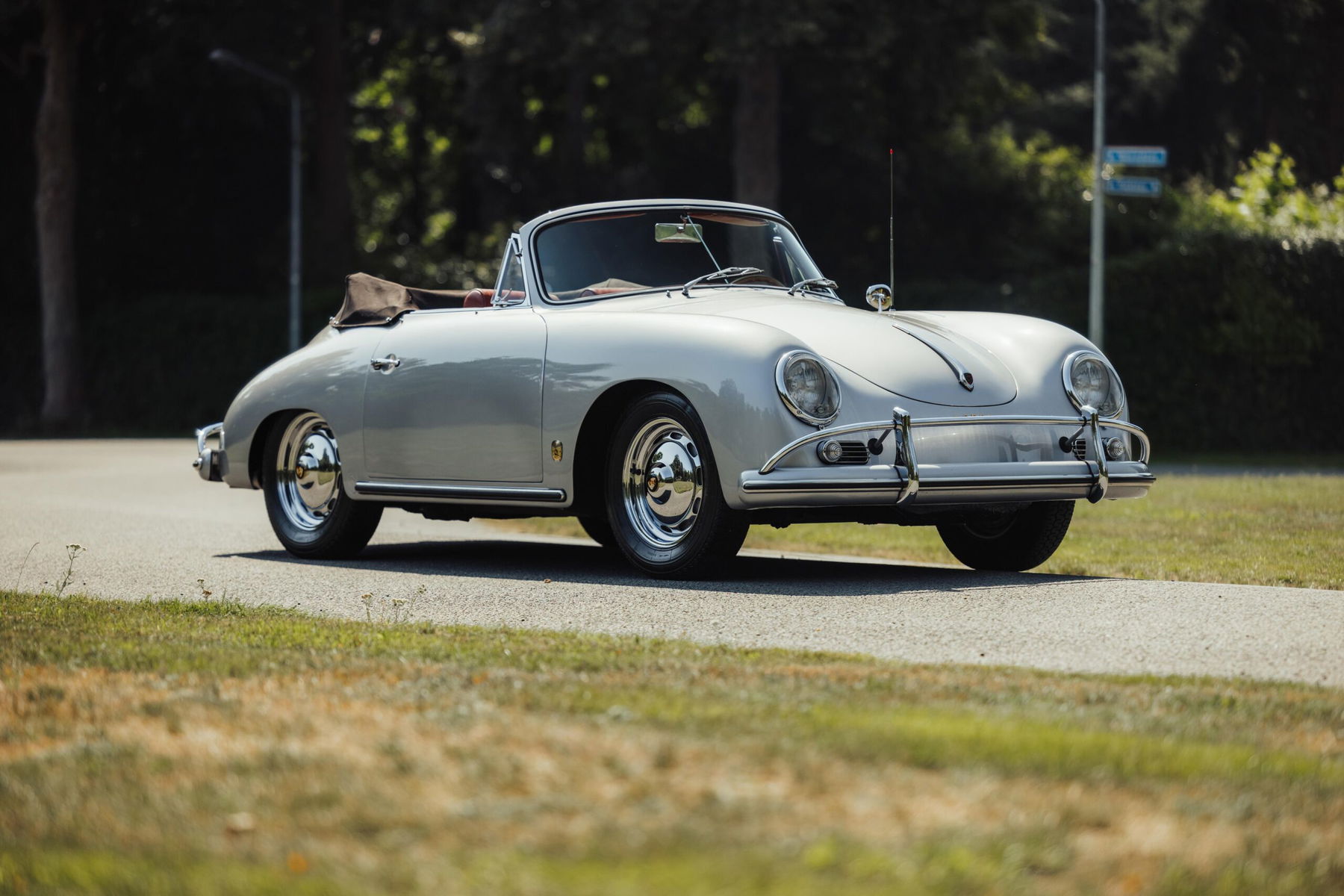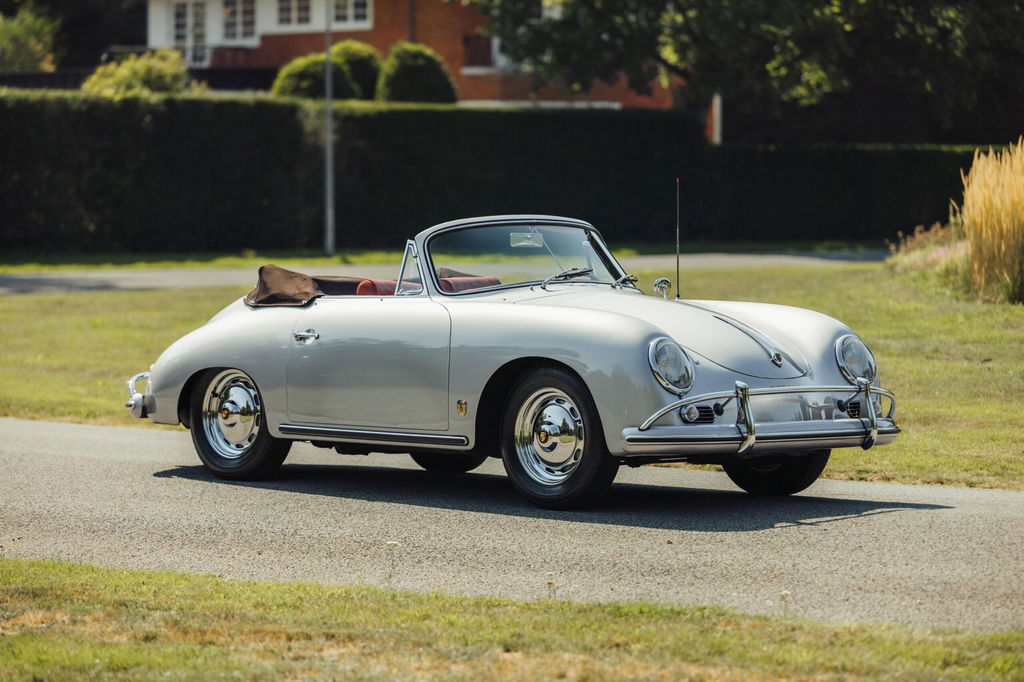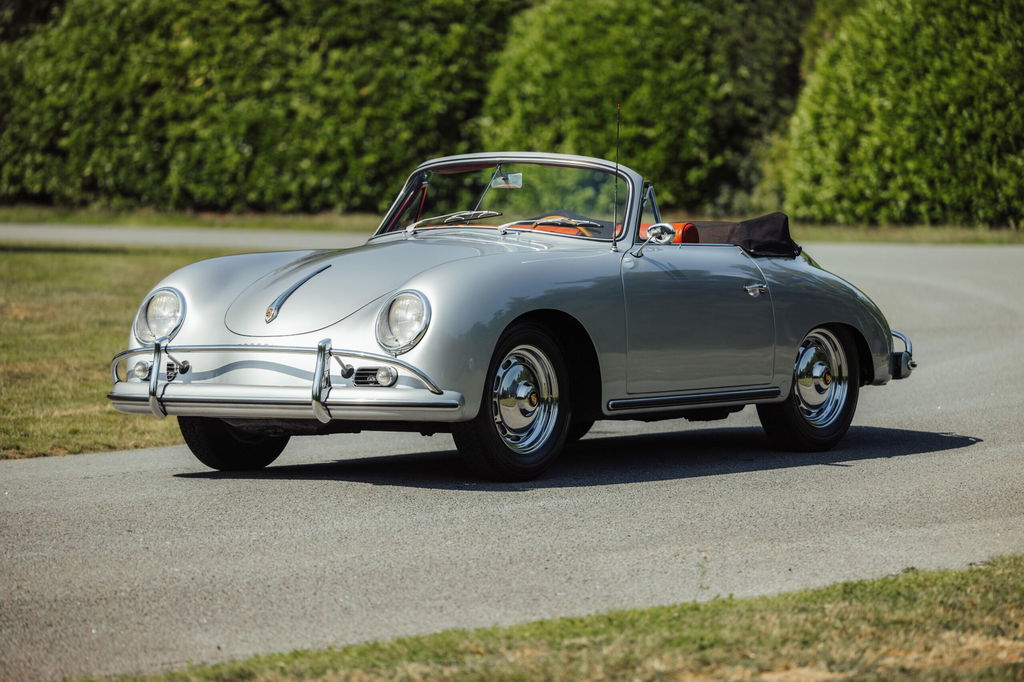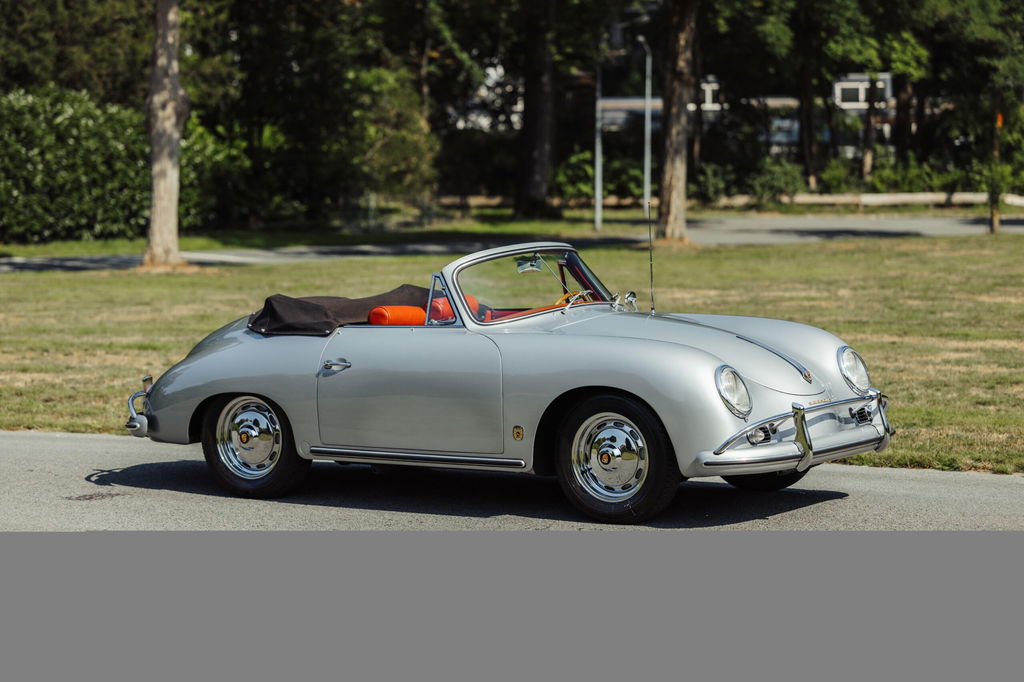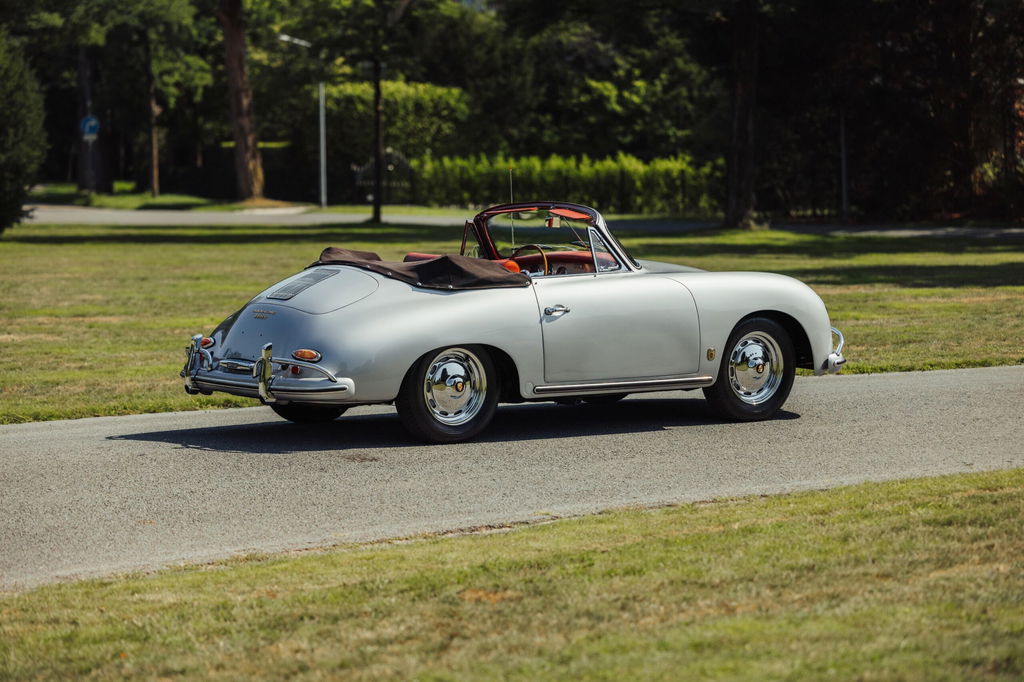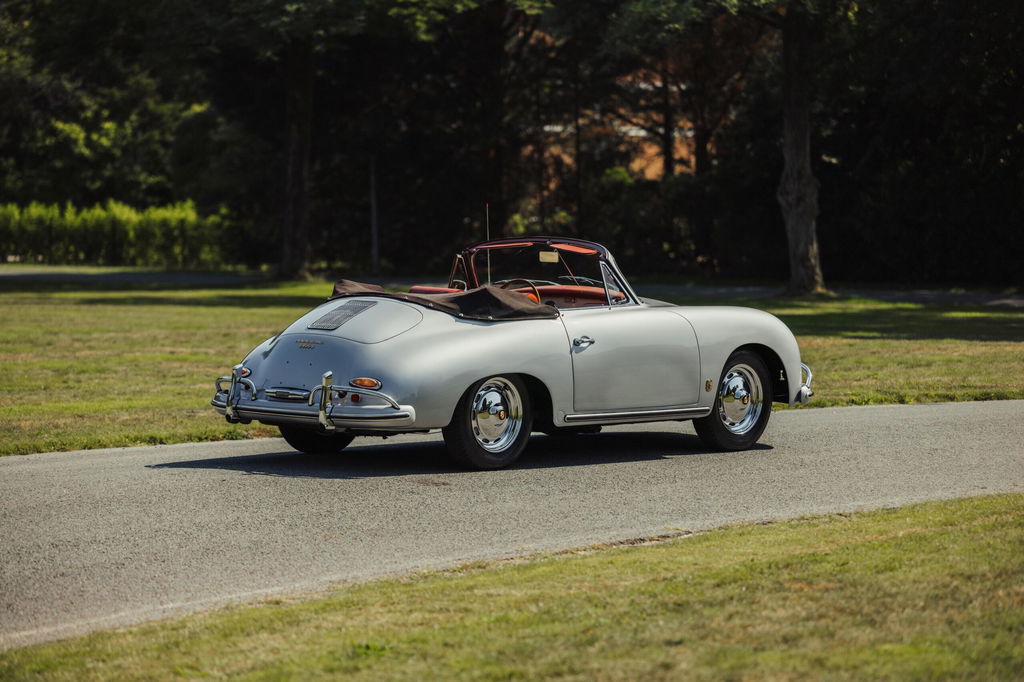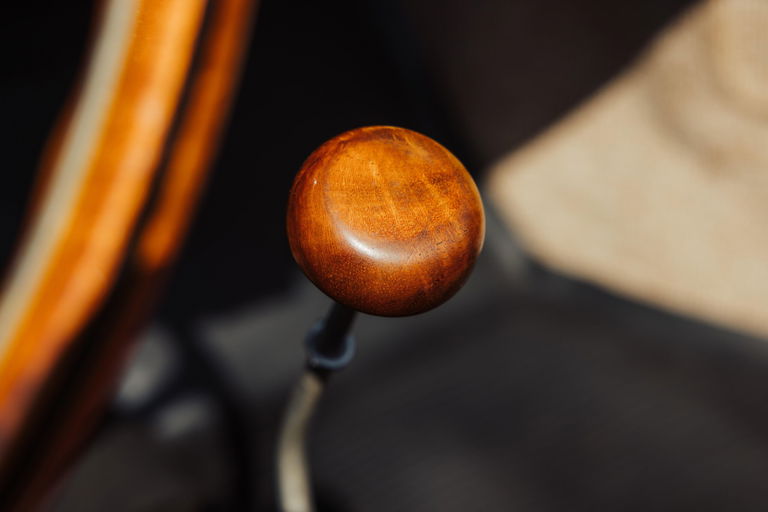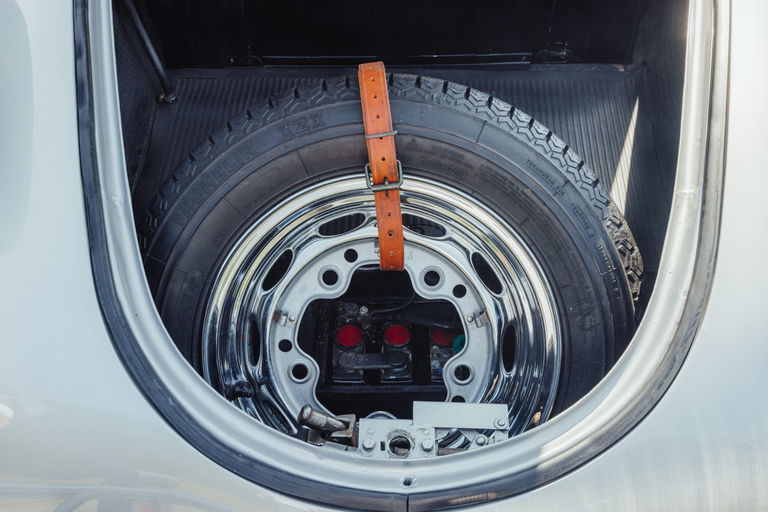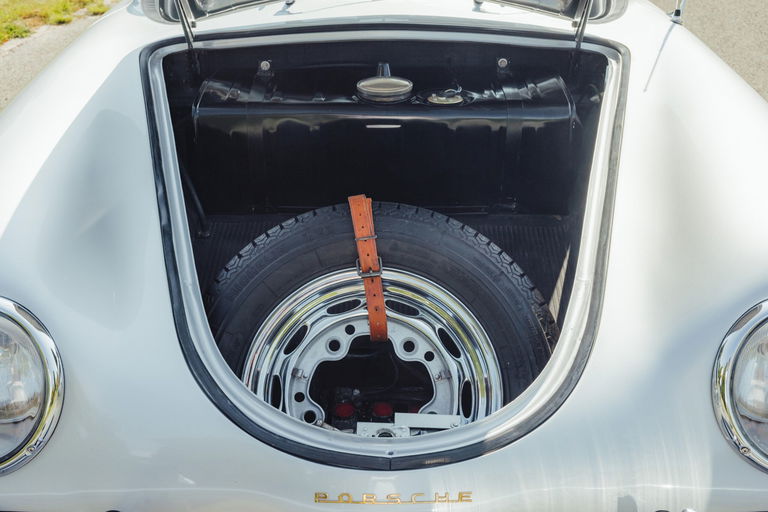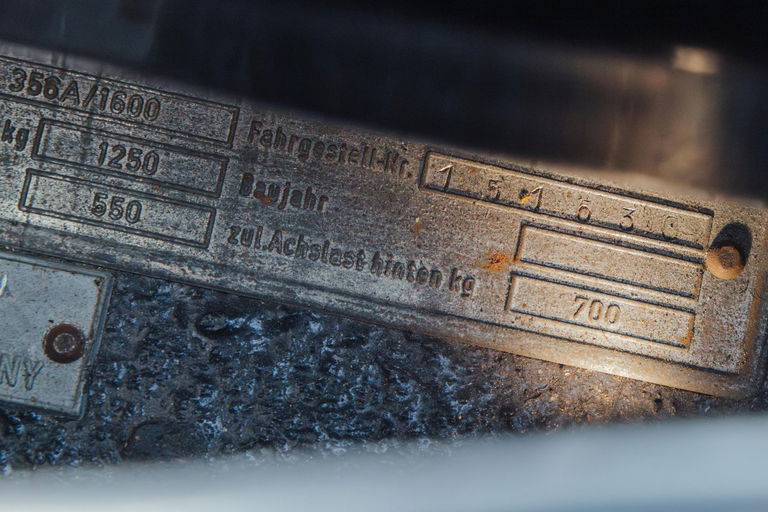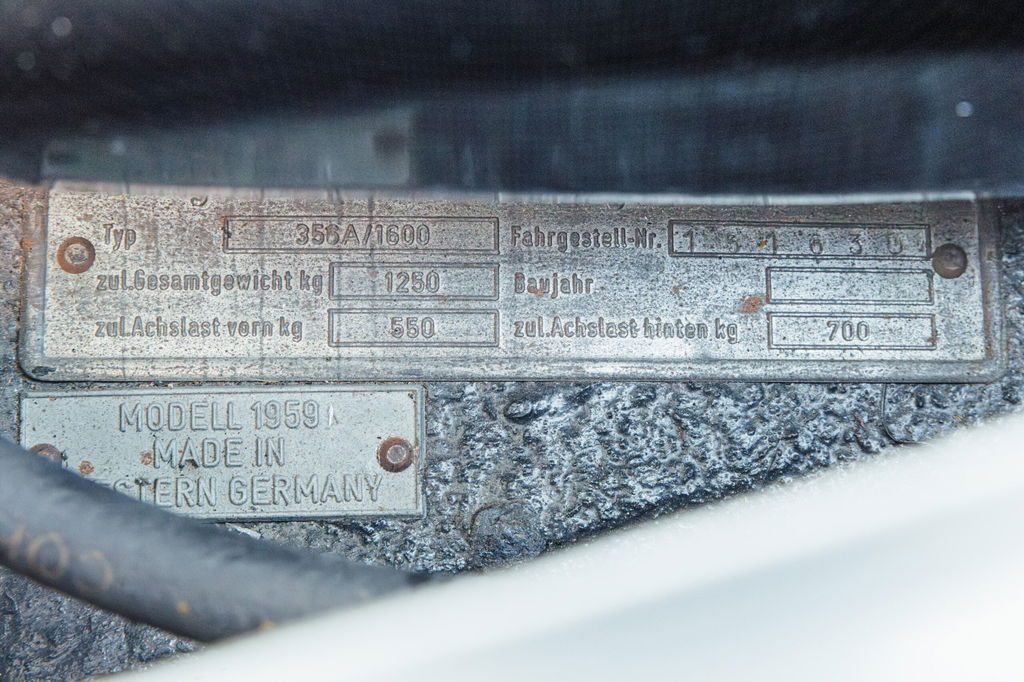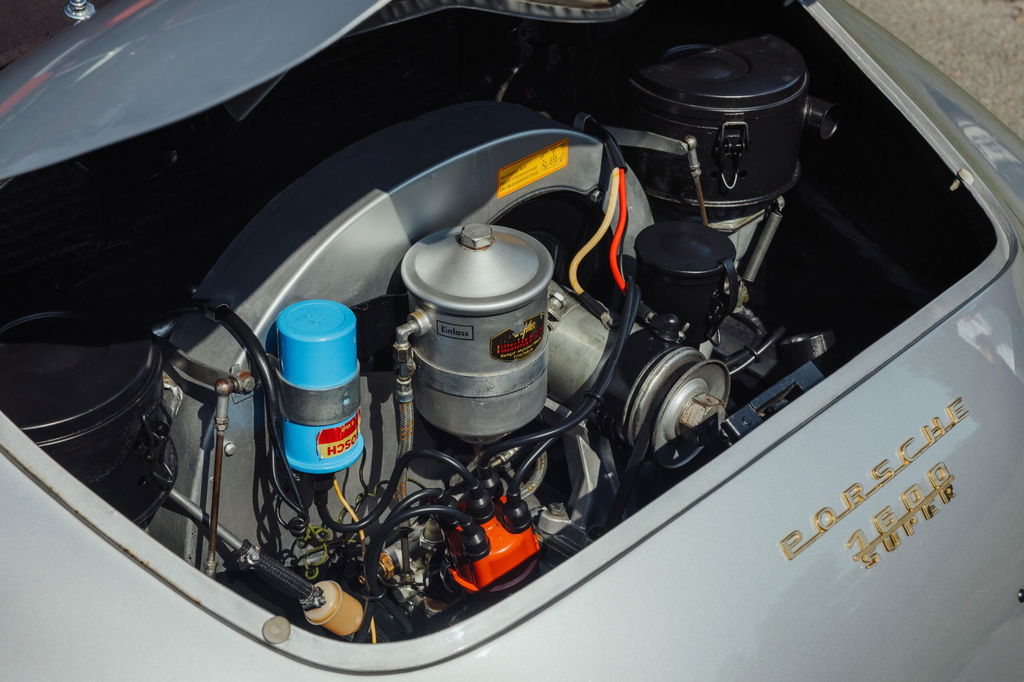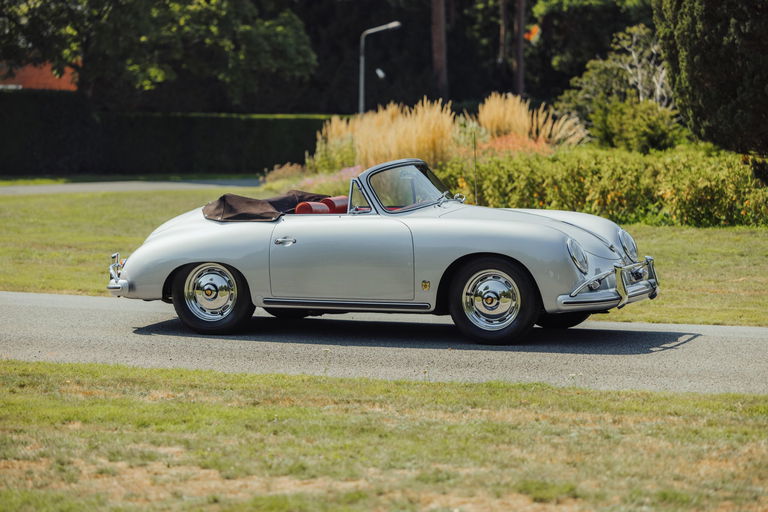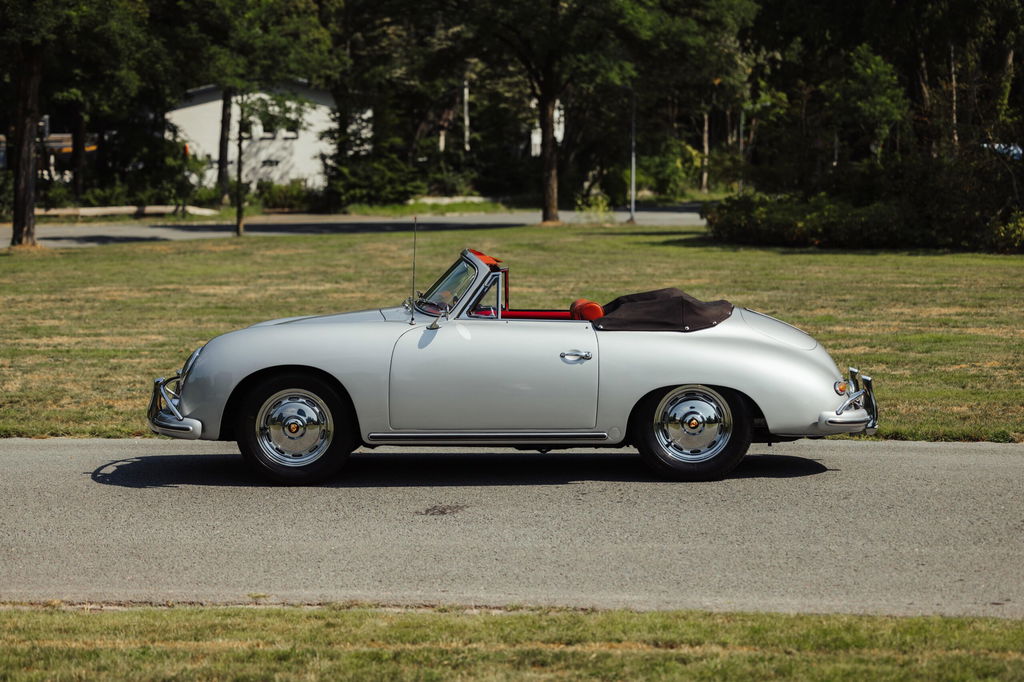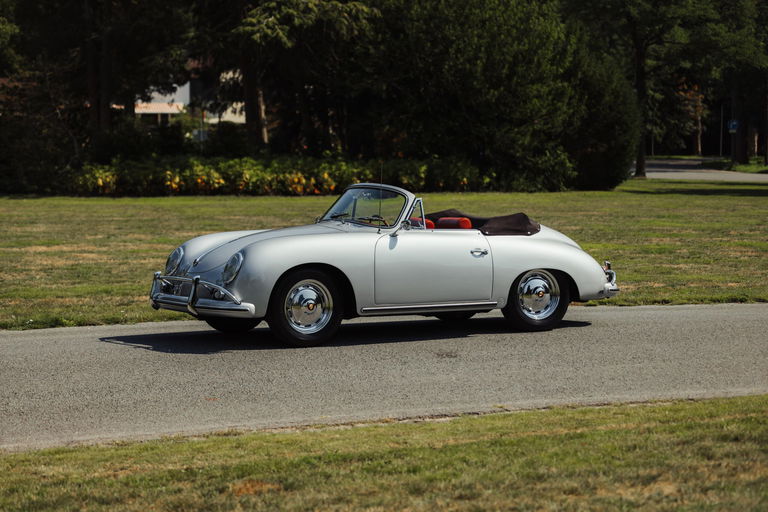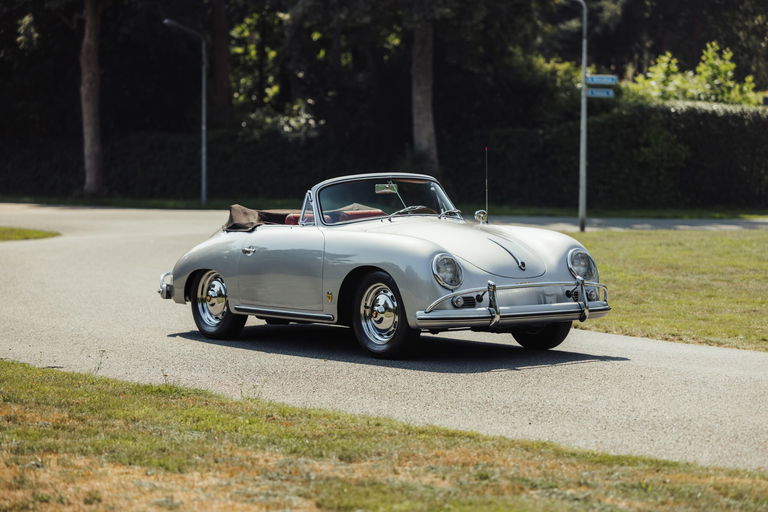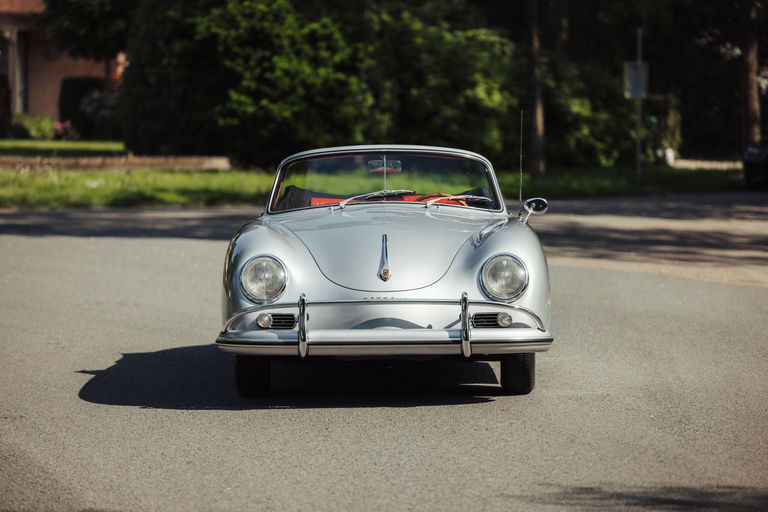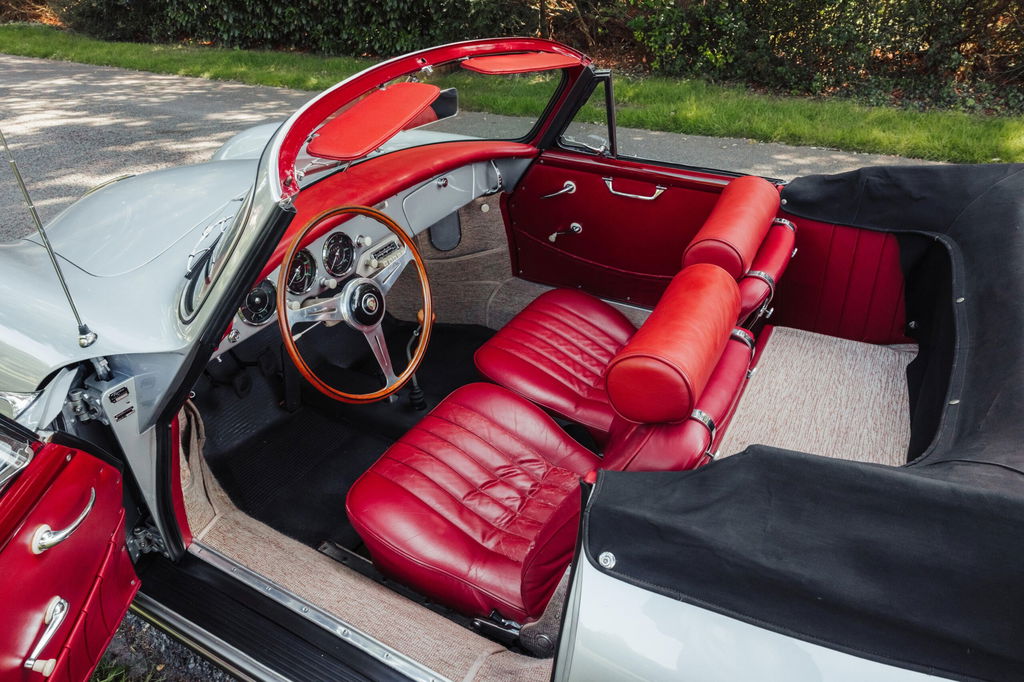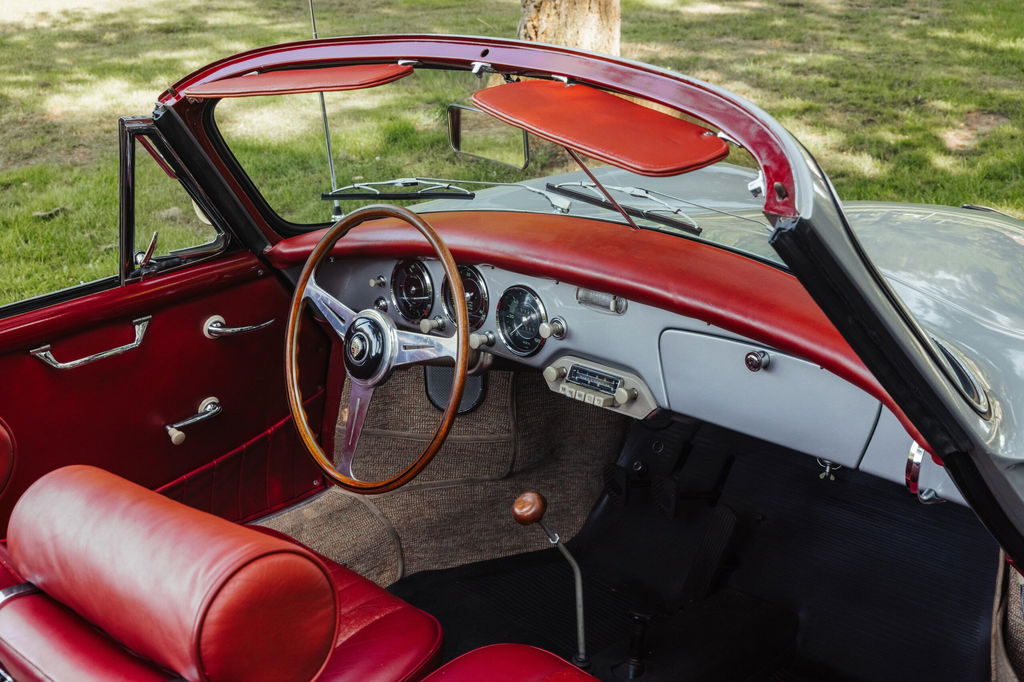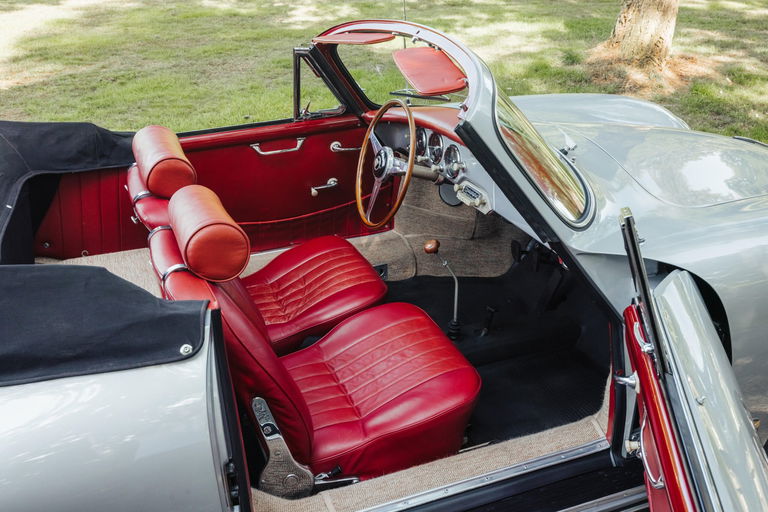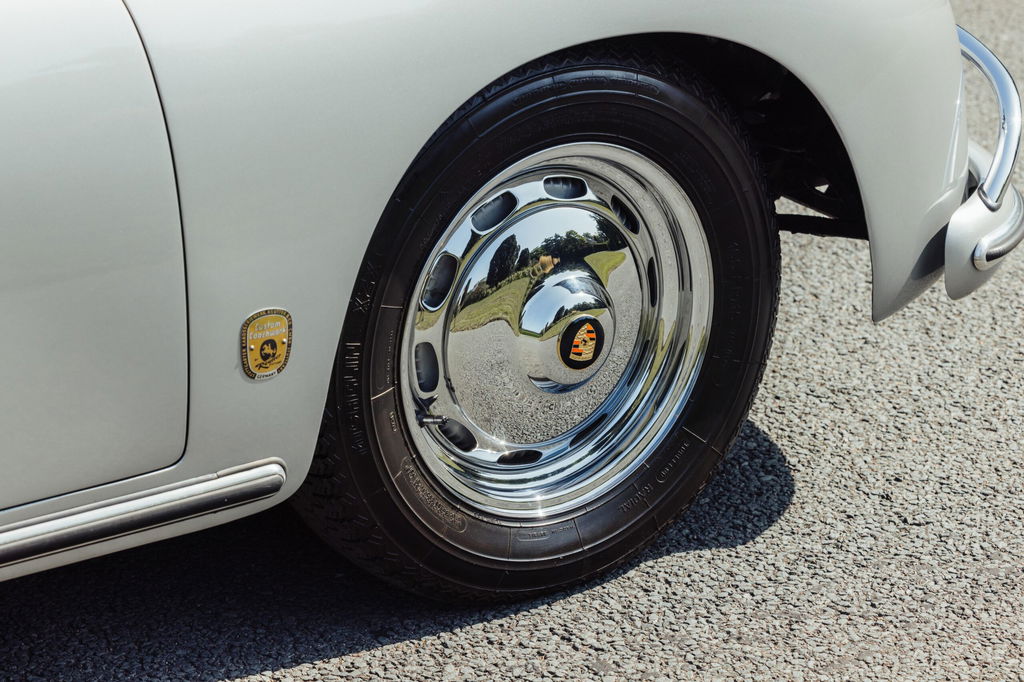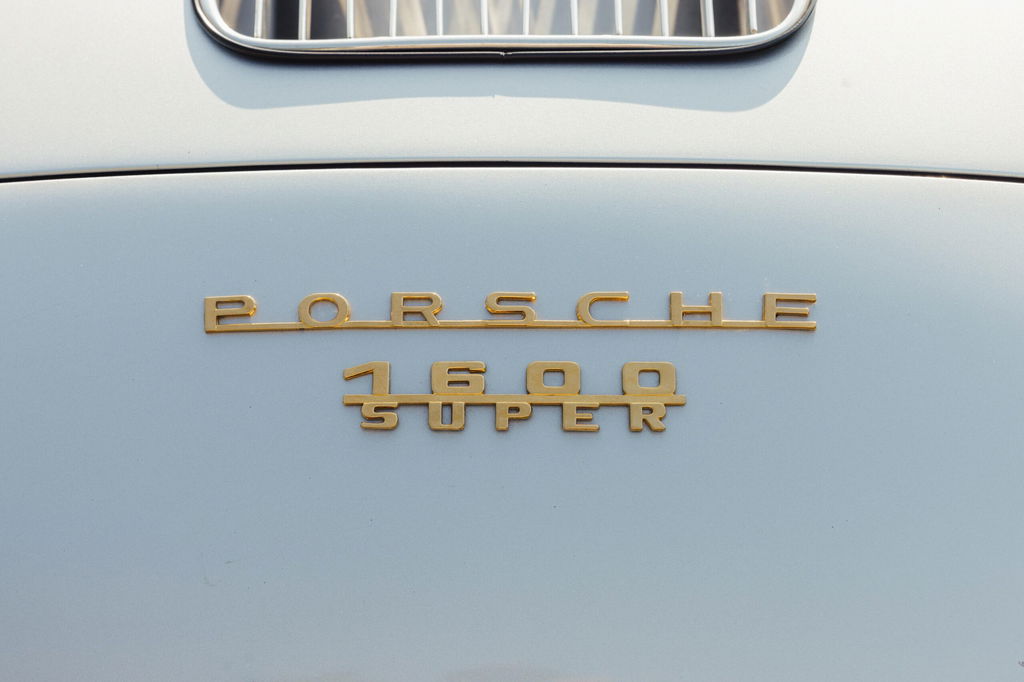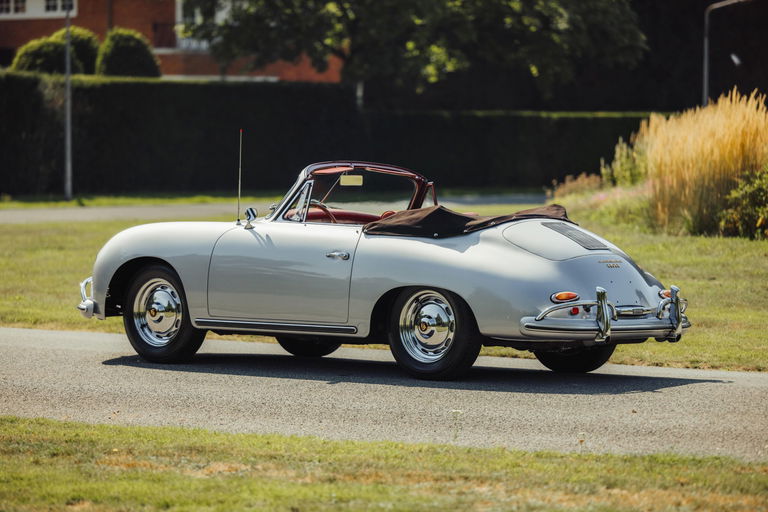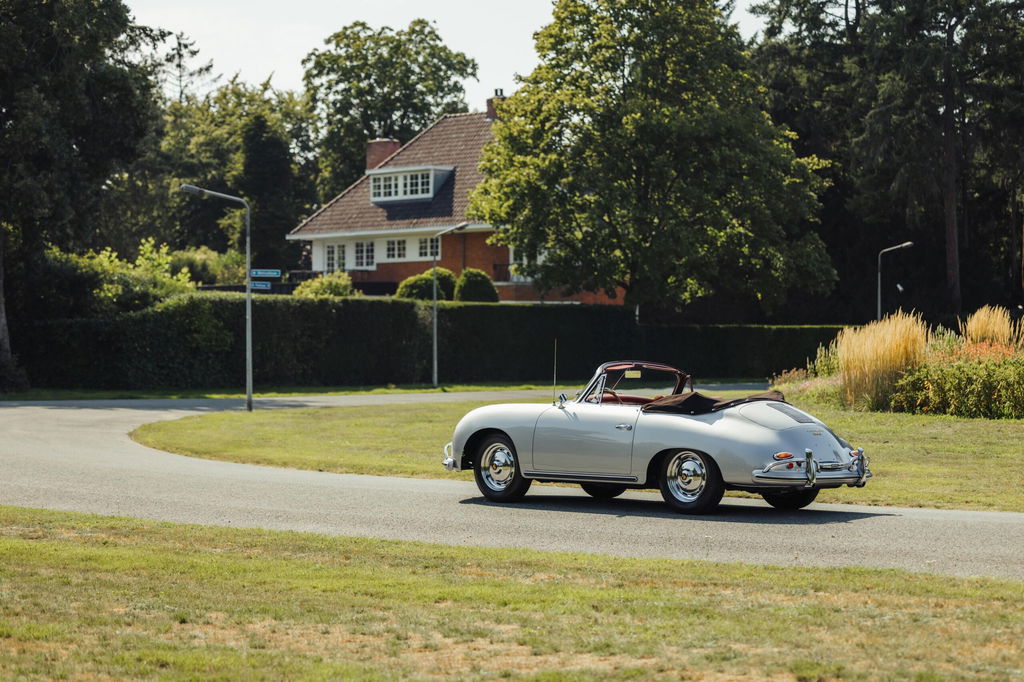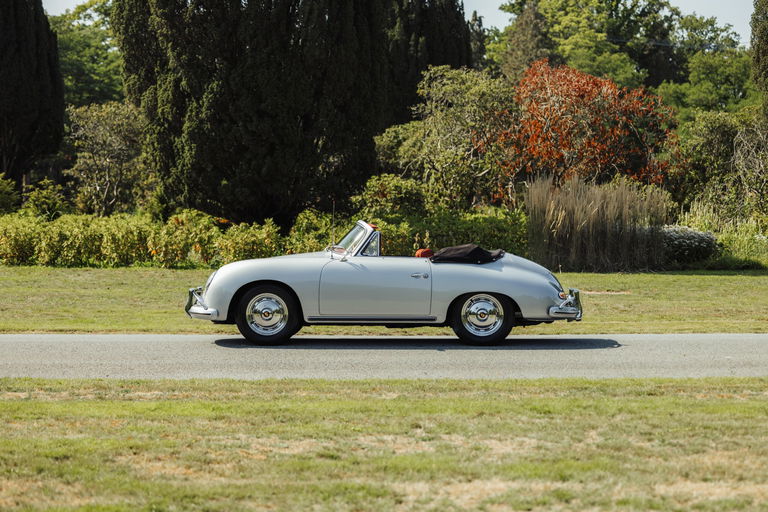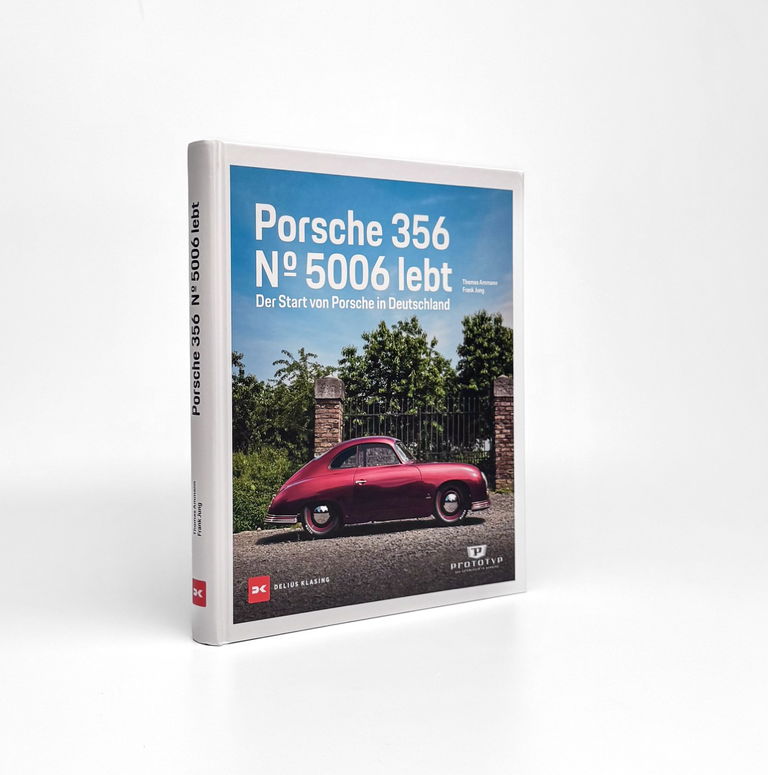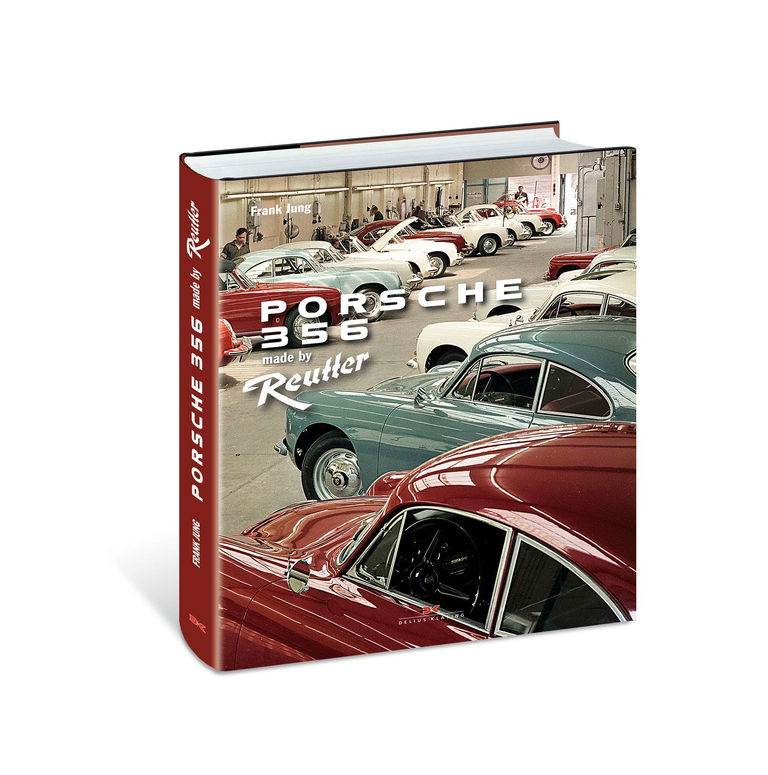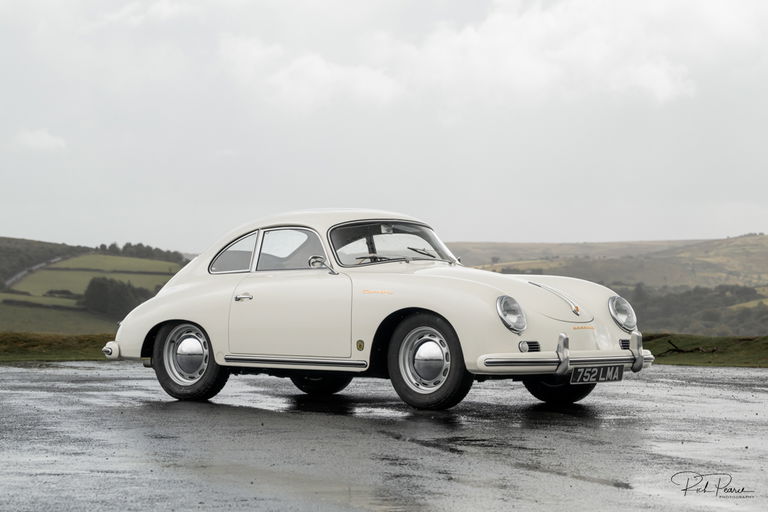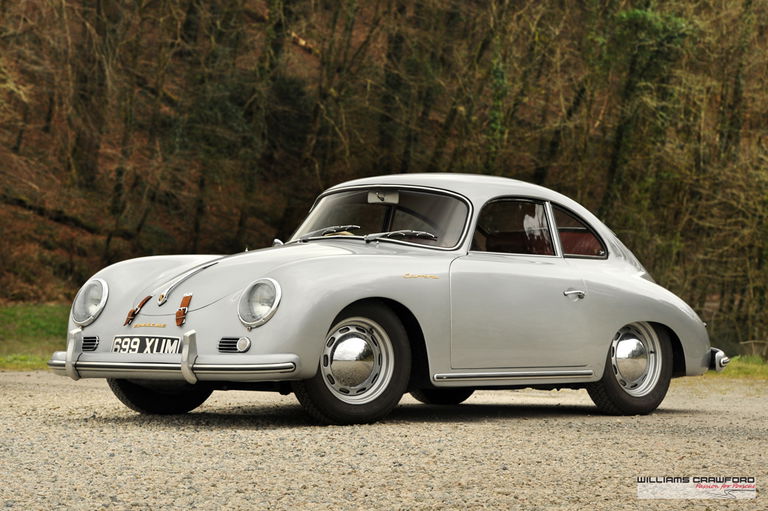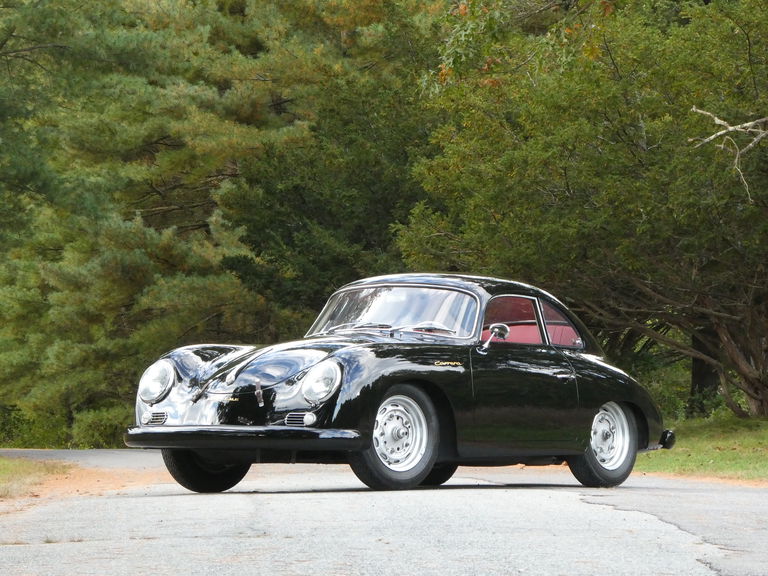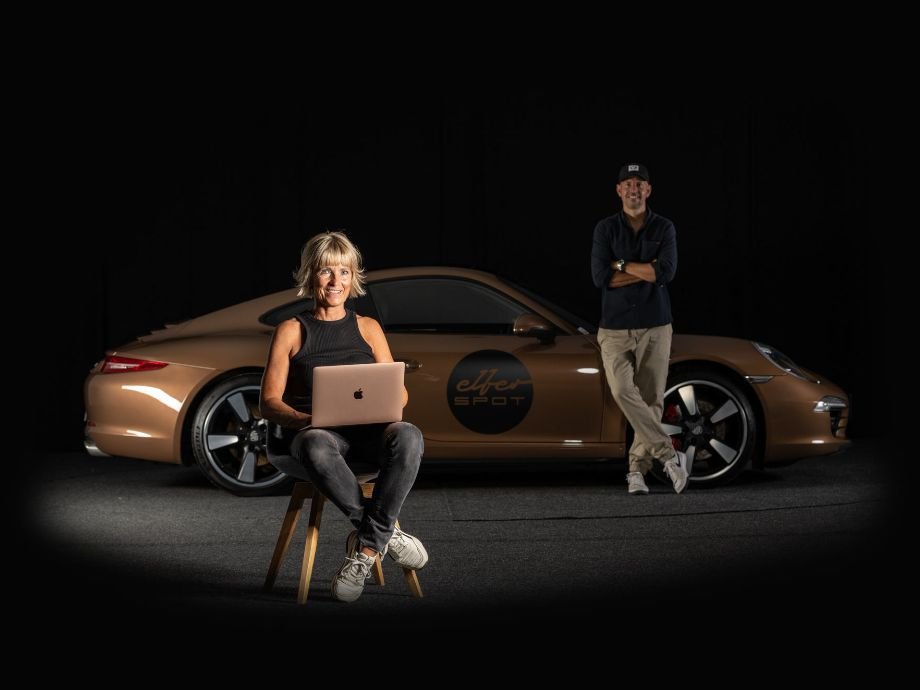Although Ferdinand Porsche had established his automotive design consultancy in the early 1930s, his name would not appear on a car until 1949. When it did, it graced one of the all-time great sports cars: the Porsche 356. Having commenced manufacture with a short run of aluminium-bodied cars built at Gmünd, Porsche began volume production of the steel-bodied 356 coupé at its old base in Stuttgart, at first in premises shared with coachbuilders Reutter and then (from 1955) in its original factory at Zuffenhausen. The work of Ferry Porsche, the 356 was based on the Volkswagen designed by his father. Like the immortal ‘Beetle’, the 356 employed a platform-type chassis with rear-mounted air-cooled engine and torsion bar all-independent suspension, yet somehow contrived to offer level of performance that belied the basic layout’s humble origins.
In 1951 an aluminium-bodied works car finished first in the 1,100cc class at the Le Mans 24-Hour Race and 20th overall, thus beginning the marque’s long and illustrious association with La Sarthe. Constant development saw the 356’s engine progressively enlarged, with 1.3-litre and 1.5-litre units first becoming available in 1951. In 1952 a Porsche synchromesh gearbox was adopted and the original split windscreen replaced by a one-piece; the latter was still V-shaped, gaining the sobriquet Knickscheibe (bent window) as a result. 1955 marked the arrival of the revised 356A, the newcomer being readily distinguished by its curved windscreen and 15″ – down from 16″ – wheels.
Cabriolets had been manufactured right from the start of 356 production, but the first open Porsche to make a significant impact was the Speedster, introduced in 1954 following the successful reception in the USA of a batch of 15 special roadsters. The Speedster was dropped in 1958 and replaced by the more civilised Convertible D, which differed principally by virtue of its larger windscreen and winding side windows. Porsche sub-contracted cabriolet body construction to a number of different coachbuilders, this example being the work of its long-established collaborators, Karrosserie Reutter.
Manufactured on 2nd February 1959, this very rare and highly sought-after Porsche 356 variant was owned by the Morris family of Berkeley, California from new until 2004 when it was sold to one Norman Petersen in San Francisco. In 2014 Mr Petersen sold the car back its original owners and it would remain with them until sold to the current owner in The Netherlands in 2021, since when it has formed part of their private collection. According to our vendor, this car has always been taken care of and has never seen any rust or damage in his life. It always lived in a dry climate. Painted over 20 years ago, it is said to retain all its original panels and numbered components: floor, battery box, gearbox, doors, door panels, colours, etc. The convertible top is ‘as new’ and all panel gaps are excellent.
The accompanying Porsche Certificate of Authenticity reveals that ‘151630’ was specified with US bumpers, sealed beam headlights, Koni shock absorbers, and Phoenix tyres. The original colour scheme was Silver Metallic with red leather upholstery, and the car was destined for Porsche’s distributor, Max Hoffman, in New York. This car was ordered with the 1600cc ‘S’ engine producing 75bhp, the most powerful option available for a 356 in 1959. The original engine was fully rebuilt by San Francisco Porsche specialists The Stable in 2007 and is included in the sale. At present the car has a 90bhp engine from a Porsche 912 installed, which likewise was fully rebuilt in 2014. Our vendor states that the car is ‘on the button’, running and driving beautifully, and displaying excellent oil pressure. The contents of the history file include copies of the 2021 shipping paperwork, sundry invoices, a California Certificate of Title, and a Porsche 356A driver’s manual.
Continue reading
